Studio Visit: Mireille Liénard
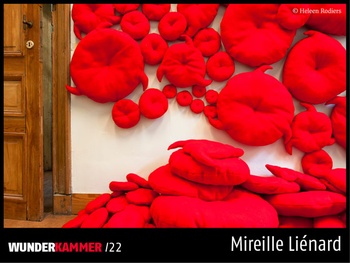
La vie, mode d’emploi. The title of Georges Perec’s mosaic novel is an association that immediately springs to mind when we hear Mireille Liénard’s (1963) story. As though the course the body and life sketch can create artistic branches that are inextricably linked to that life, and even find their origin and methodology in it. Or perhaps the association springs too quickly, leading us to jump to illusory conclusions. The Kuleshov effect, our inescapable tendency to interpret two distinct images as a coherent, causally connected sequence, is a very human affliction. The fact is that hemochromatosis, a disease which causes the body to absorb more iron than it can excrete, contains very attractive symbolism for two central aspects of the artistic method of one of its bearers, Mireille Liénard: blood and metal, le rouge et le noir. Liénard was educated as a sculptor at La Cambre, where she specialised in metalwork. “As a vital element, red mingled with black. It is life, but also death. It contains that whole ambivalent symbolism, which recurs in mythology, history, and philosophy.”
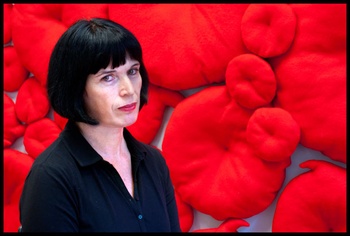
Mireille Liénard’s art is dominated by the ambivalent. Her objects and (occasionally) monumental installations always appear nuanced, as an intimate joining of the geometric and the organic; the hard and the soft. “I always work with materials that have a certain ambivalence. Metal can be very soft or very aggressive. Fabric is visually very soft, but you can give it sharp edges so that it takes on aggressive qualities. In the installations and even in the objects, the metal foundation is allied with wax and fabric, for example, which add an organic element.” It will thus come as no surprise that her exhibitions have equivocal titles like Les fleurs du mal (2000-2002), Pur et profane (2007-2009), and Multiplicité et multiples cités (with Bob Verschueren, 2011). It is practically impossible to overlook the importance of transformations, metamorphoses, and duplication in Mireille Liénard’s work and exhibitions. The abstraction that dominates her work formally, finds an equally universal counterpart in her themes: the language of mythology. “We continue to find those myths in our lives, every single day. Despite the fact that this mythology can be traced back to ancient Greece, it remains contemporary. You can link a Greek myth to any and every topic of conversation. I do not consider that to be living in the past, but rather to connect the past to what we experience now. Those human truths are universal and timeless.”
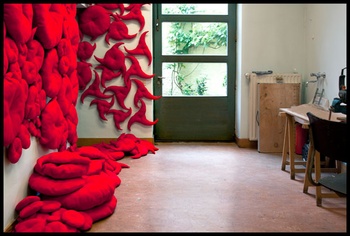
Her fascination with Greek culture led Liénard to move to Greece immediately after her graduation from La Cambre: “I lived in Greece for thirteen years. I still have a house there, which I spend two months in every summer. I go for the holidays, but I always work a little too, organising exhibitions and seminars. But after thirteen years, I really wanted to move back to Brussels. My work retains my connection to Greece, with its rich culture and philosophy. Living and working there only served to strengthen my fascination and bond with the place.”
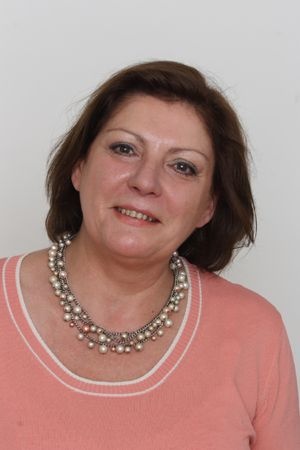
Mireille Liénard has been back in Brussels – her place of birth and also the city where she completed her studies after her youth in Mons – for almost six years now. Her studio in the Washuisstraat/rue de la Buanderie, five minutes from her home, is divided over two floors, separated by a glass floor. This is where she is to be found when she’s working a project. “I’m not the sort of artist who goes to the studio to beg the muses for inspiration. Not at all. I first sketch my projects at home, and then come here to create them.” When we visited, the place was very neat and tidy. “I’m leaving for Greece soon. The studio will be renovated while I’m away.”
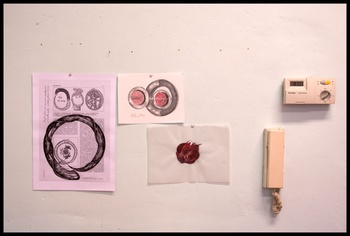
Two walls and part of the floor are covered with some of the 200 cushions that have returned from the exhibition Multiplicité et multiples cités, which was held at the Salle Saint-Georges in Mons. The creation cycle of that project is a good illustration of the interweaving of form and content in her work – the soul underlying the abstraction. “This installation was based on the architecture of the Salle Saint-Georges, and on the idea that I had to cover it because it does not lend itself to the integration of contemporary art. And then it suddenly dawned on me that I could start from the idea of overgrowing the space. It was almost like a vision! [laughs] Via the dictionary, I landed on the phrase ‘proliferation de globules rouges’. I then started looking for images of red blood cells, a number of which illustrated an attack by a virus. A healthy red blood cell is circular and concave. When it is attacked, it defends itself by changing its shape. So that is what I did too: I made prototypes of cushions that evolve from circles to triskelions. I discovered that in Pythagorean geometry, the triskelion is the form that best expresses the movement of life. What’s more, it is an image that was used very often throughout antiquity.” The combination of the installation and a text by Empedocles completed the circle.
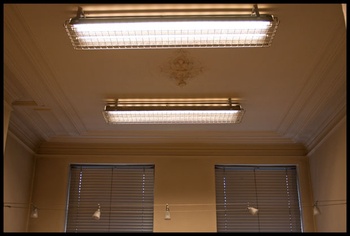
Mireille Liénard’s art is a point where numerous influences (architecture, anatomy, philosophy, mythology) converge. In its abstract formal treatment of universal, timeless, and human themes, it does not lend itself to quick or easy familiarisation: “It is very peculiar. People who don’t know my work think it is very aggressive. People who do know it and dig a little deeper think it is incredibly erotic and organic.” It is work that invites you to look more closely than a superficial glance and which ultimately leads to that one human truth, that one extremely valuable user manual for life: don’t judge a book by its cover.
Borough: Brussels
Exhibition: LaGalerie.be, December 2013, www.lagalerie.be
Info: www.lagalerie.be/mireille-lienard
Photos © Heleen Rodiers
Borough: Brussels
Exhibition: LaGalerie.be, December 2013, www.lagalerie.be
Info: www.lagalerie.be/mireille-lienard
Photos © Heleen Rodiers
Read more about: Expo
Fijn dat je wil reageren. Wie reageert, gaat akkoord met onze huisregels. Hoe reageren via Disqus? Een woordje uitleg.